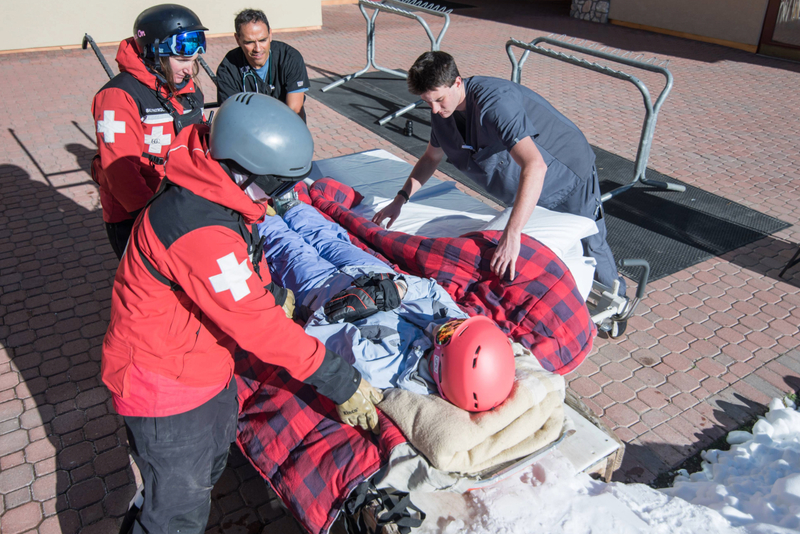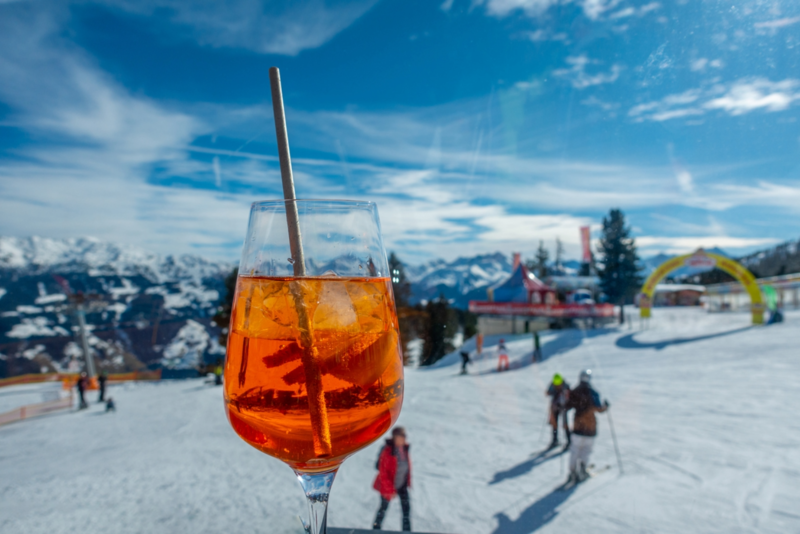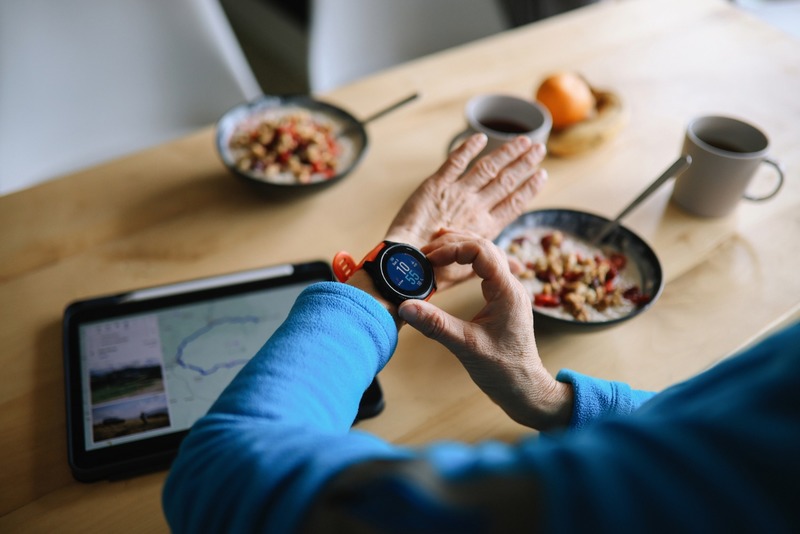News
Understanding ACL Tears: From Risk to Recovery - Part 1

This three-part series covers ACL injuries, from risk to recovery. Learn from experts at The Steadman Clinic, Vail Summit Orthopaedics & Neurosurgery and Howard Head Sports Medicine. While no one wants to be injured, there is no better place to tear an ACL than Vail, Colorado.
Part 1: What Are the Risks?
Some say an ACL tear is a rite of passage for those who live and play in the mountains. Everyone who has experienced it wears an invisible badge of honor, and most are quick to share their story with the newest members of this not-so-elite club.The anterior cruciate ligament (ACL) is the most commonly injured knee ligament. The ACL connects the femur to the tibia and helps prevent the knee from shifting out of place or rotating too much. If there’s enough force to bend or twist the knee farther than its limit, the ACL can be injured or torn. Experts estimate between 100,000 to 200,000 ACL tears occur in the U.S. each year.
“The incidence per capita is higher in Vail, Colorado, than a rural town in Indiana, for instance, because of the number of skiers,” said Dr. Tom Hackett, a complex knee surgeon at The Steadman Clinic.
Who is most at risk?
While anyone can experience an ACL tear, they’re most common among athletes and especially those whose sport involves pivoting, twisting and stopping suddenly. Soccer, football, lacrosse and basketball players; gymnasts; and you guessed it, skiers, are all at high risk for tearing an ACL. Landing a jump awkwardly, stopping suddenly or receiving a direct blow to the knee can all cause that famous “pop” that is indicative of an ACL tear.According to Dr. Richard Cunnnigham, a complex knee surgeon at Vail-Summit Orthopaedics & Neurosurgery, “Skiing, in particular, is one of the highest risk sports for ACL tears.” Sudden twisting like catching an edge can put extreme stress on the knee, forcing the ACL to tear. “Unfortunately, it’s the nature of the sport,” said Dr. Cunningham.
While icy conditions cause fractures, Dr. Cunningham says he sees more ligament injuries after a big snowfall.
“People skiing powder tend to fall into the backseat of their skis instead of staying centered on top of their skis,” he said. “The downhill ski takes the pressure, and in heavy snow, there can be a sudden rotational and inward stress on the knee, causing the ACL to tear.”
Snowboarders need not gloat–while ACL tears are less common in everyday knuckle-draggers, there is a higher incidence of tears in expert-level snowboarders. Elite-level riders tend to take bigger jumps and land awkwardly, off-axis and typically on their front knee. Dr. Hackett did a study a few years ago with snowboarders in Vail’s terrain park.
“We set up an on-snow lab and through motion analysis, we looked at the forces and mechanics of snowboard landings,” he explained. “We found that flat landing in certain positions is a recipe for an ACL tear on the front leg.”
In addition to sports, the most common causes of ACL tears include car accidents and falls. Another significant factor that can contribute to the risk of an ACL tear: being a woman. Studies show female athletes are 2-8 times more likely to suffer an ACL injury than their male counterparts. Anatomical factors, hormonal influence and muscle imbalance all contribute to this heightened risk.
“Women are more likely to be ‘knock-kneed,’” said Dr. Cunningham. “The inward stress placed on the knee joint puts excessive strain on the ACL and can significantly increase the risk of tearing the ligament.”
Dr. Cunningham explains that women tend to land jumps differently and have muscular imbalances that can place additional stress on their ACLs. Females’ hamstring and gluteal muscles are often weaker than their quads and hip flexors, and these muscle imbalances cause females to land in a knock-kneed position, which places more stress on their ACLs.
“Unlike some injuries that result from direct impact, many ACL tears occur during non-contact events,” said Dr. Cunningham. “These events often involve sudden changes in direction, deceleration, or landing from a jump. The mechanism commonly associated with these injuries is the dynamic valgus collapse, where the knee moves inward and places excessive stress on the ACL.”
In addition to athletes and women, those who have torn an ACL once before are at higher risk for a re-tear or a tear of the other knee, also known as a contralateral tear. The risk of re-tearing an ACL can range from 1–2% to more than 20%. Several factors can increase the risk of a re-tear, including the type of graft that was used in surgery, the rehabilitation and timing of return-to-sport, and genetics and mechanics (joint laxity, for instance). The younger the patient was at the time of an initial ACL reconstruction, the higher the likelihood of a re-tear. Studies find the risk of a contralateral ACL tear is 5-12% and possibly higher in younger athletes and females.
Preventing ACL tears
So if being a woman and being an athlete increase the risk for ACL tears, should we just hang up our skis and take up knitting? Absolutely not! While injury is always a possibility, proper training and exercise can reduce the risk of tearing an ACL.Dr. Hackett’s number one recommendation for preventing an ACL tear is hip strengthening.
“The hip muscles run perpendicular to your skeleton, or across the plane of your body, so those muscles are the most important for controlling the position of the legs,” he explained.
There are many muscles in the hips that work together to enable movement, stability and strength. Dr. Hackett recommends working with a physical therapist or strength and conditioning professional to identify the exercises that will be the most protective.
“And strengthening shouldn’t just happen in the weeks leading up to ski season,” he said. “People think their activities are making them stronger, and in a sport like skiing, they are building quad strength for sure. But those at risk of ACL tears should continue strengthening their hip muscles all season long.”
Brooke Milliet is a doctor of physical therapy for Howard Head Sports Medicine. She creates custom plans to help patients mitigate their risk of injury.
“You can significantly decrease your risk of injury by strength training at least 60-80% of your one-rep maximum,” she said.
A "one rep max" refers to the maximum amount of weight you can lift for a single repetition of an exercise. This is meant to represent the maximum exertion in a movement with proper form.
Milliet encourages skiers to start a strength training program at least 3-4 months before the season begins, and to continue training at least once per week in season to maintain strength.
“Skiing is a highly athletic sport, with exponentially large ground reaction forces and speed components,” she said. “Even if you are skiing green runs, it is important to know your body can hold up to the speed and torque that skiing can produce, because it is much more than the average person thinks.”
In addition, the following tips can help:
- Stop when you’re tired. You know those “jelly legs” you feel at the end of a long day of skiing or an especially hard workout? Don’t push through that sensation. That’s your body telling you “enough!” It’s easiest to make mistakes and forgo good technique when you’re fatigued.
- Create a balance between strength and flexibility. Tight and overstretched muscles are both more prone to injury. Stretch and warm up before jumping into activity.
- Wear proper equipment. Incorrect or worn-out gear can contribute to instability.
- Eat a balanced diet for strength, endurance and focus.
- Give your body proper rest.
- Consider working with a physical therapist who can assess your risks and work with you to strengthen the lower body strength to prepare you for sport.
“I do want to make it clear that your risk of an ACL tear will never be zero, even if you are doing everything right—there is inherent risk in sport,” said Milliet. “It is important that if you are injured, you seek professional care to prevent further injury.”
When it comes to skiing, “The more days you’re out there, the greater the risk,” said Dr. Cunningham. “I get it, skiing is fun! But knowing what I know and having torn an ACL myself, I spend more time Nordic and uphill skiing. I want to be able to pursue all my activities when I’m in my 70s.”
And if you happen to tear an ACL, check out part two and three of this series: So You’ve Torn Your ACL, Now What? and What to Expect on the Road to Recovery.
More News
-
New!
More

First Chair to Last Call: What Does Alcohol Really Mean For Your Health?
In nearly every Colorado ski town, some iteration of the neon sign blares its play-hard-party-harder anthem. It’s a not-so-subtle nod to mountain party culture, a lifestyle that normalizes combining sports and outdoor adventures with heavy drinking and partying. In Eagle County, après culture, high-altitude living and outdoor performance have coexisted for as long as locals have been sliding on snow. But how much is too much at altitude? And what role do social support systems play in helping residents find balance?
-
New!
More

Counting More Than Steps: How Wearables Can Help (or Hinder) Your Health
From step counts to sleep stages, heart rate variability to blood sugar spikes, wearable devices are giving us a front-row seat to what’s happening inside our bodies. Strapped to wrists, slipped onto fingers or wrapped around our biceps, wearables like the Oura Ring or Whoop strap promise insight and advice in the quest for better health.
-
More

Cass Barham and Sarah Crabtree Honored As Recipients of Vail Health Elevate Award
Cass Barham and Sarah Crabtree, both lab techs at Vail Health Hospital, have been named recipients of the Vail Health Elevate Award. Vail Health created the Elevate Award in June 2022 to give patients and their families an opportunity to nominate and thank employees who have touched their lives in some way.
